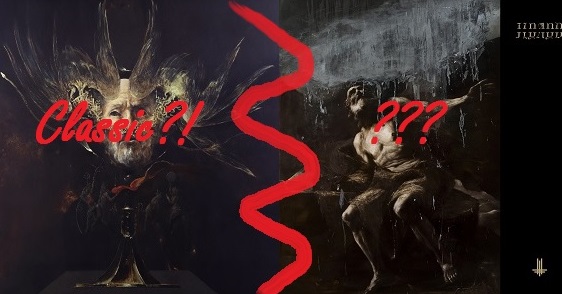Recently, Polish black/death metallers Behemoth released their new album ‘I Loved You at Your Darkest’,1 which is the follow-up to their critically acclaimed ‘The Satanist’ from four years ago.2 In fact, their 2014 release has been acclaimed more than critically, it meant the band’s scenic and extra-scenic breakthrough. In many reviews, it has been deemed a new classic of extreme metal. In 2015, I felt tempted to deem the album an ‘existential’ one. However, that was in early 2015, three and a half years ago.
Since then some time has passed. The Polish band went on extensive touring journeys of thoroughly ritualized concerts and thereby fortified their image. The recent issuing of the new album is a perfect opportunity of asking what makes a ‘classic’ in the cultural history of heavy metal. In the case of ‘The Satanist’, reviewers, journalists and fans have been quite quickly in their decision (as myself back in 2015, too).
However, if we look at other ‘classics’, such as Iron Maiden‘s ‘The Number of the Beast’ (1982), Metallica‘s ‘Master of Puppets’ (1986), or Mayhem‘s ‘De Mysteriis Dom Sathanas’ (1994) in Behemoth’s own genre(s), things look different. All those records’ status quo as such mystified ones resulted from decades-lasting processes of memorialization and collective memory-building of such narratives.
In my upcoming book with Emerald Publishers,3 ‘classic’ and ‘cult’ albums are an important topic. History is the science of time, of its past dimension, connected to the present and the future. Such records mark certain points in history, make them available in space and time. They are key elements of identity constructions of metalness. For the case of Behemoth, that implies one major conclusion. Perhaps, their ‘The Satanist’ marks 2014 as their classic year in 2018. Yet, as cultural collective memory is a matter of decades, usually needing about a generation to crystallize into less liquid forms,4 it is a classic in 2018. This does not logically imply it still will be one in 2028, 2038, 2048 or later.
Behemoth, I Loved You at Your Darkest, Nuclear Blast, 2018. ↩
Behemoth, The Satanist, Nuclear Blast, 2014. ↩
Peter Pichler, Metal Music and Sonic Knowledge in Europe: A Cultural History, Forthcoming 2019. ↩
Jan Assmann, Das kulturelle Gedächtnis. Schrift, Erinnerung und politische Identität in frühen Hochkulturen, München: Beck, 1992. ↩


